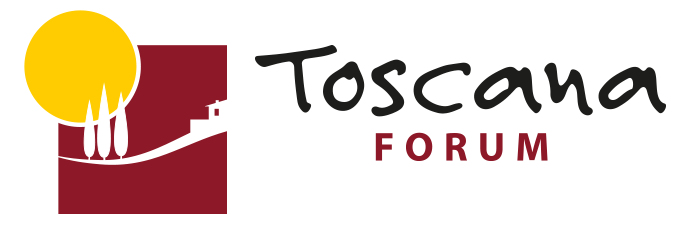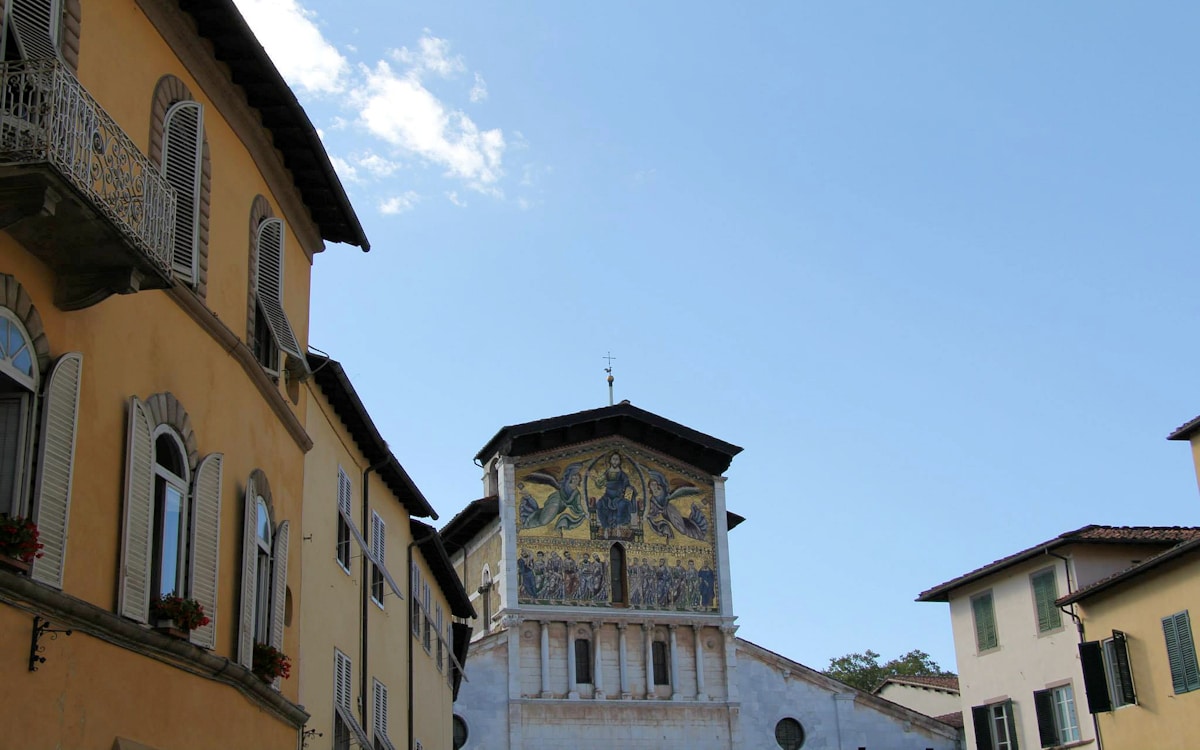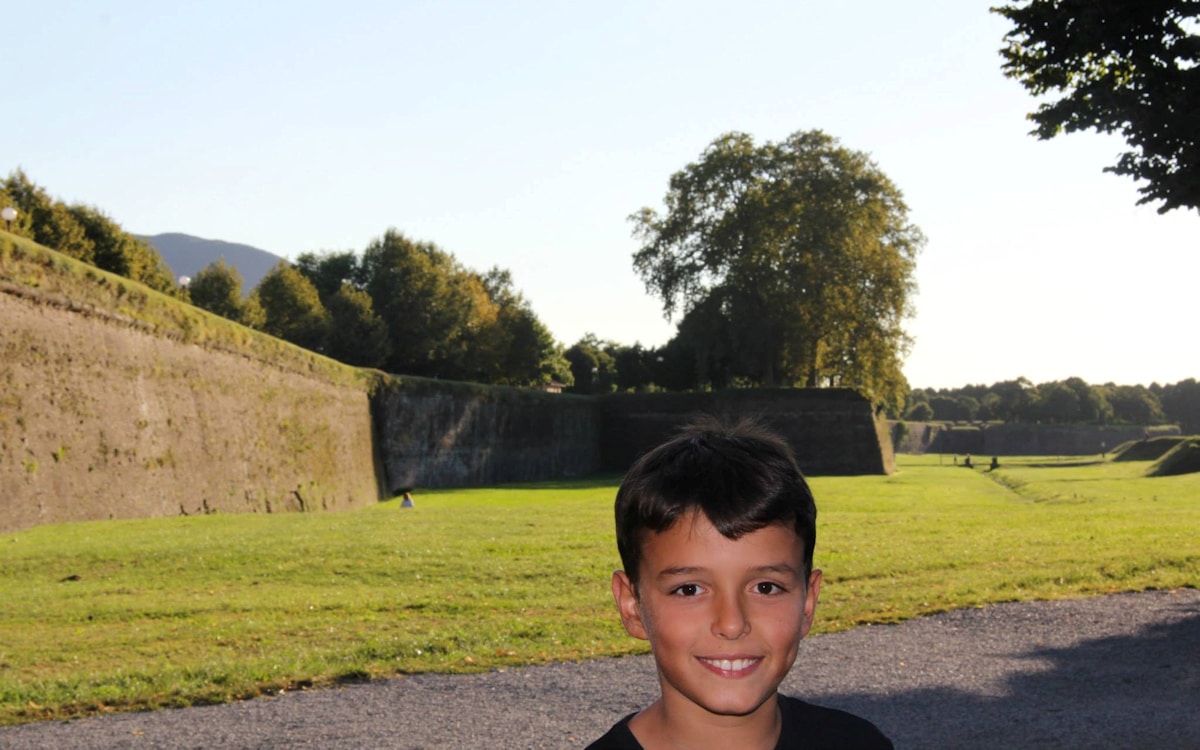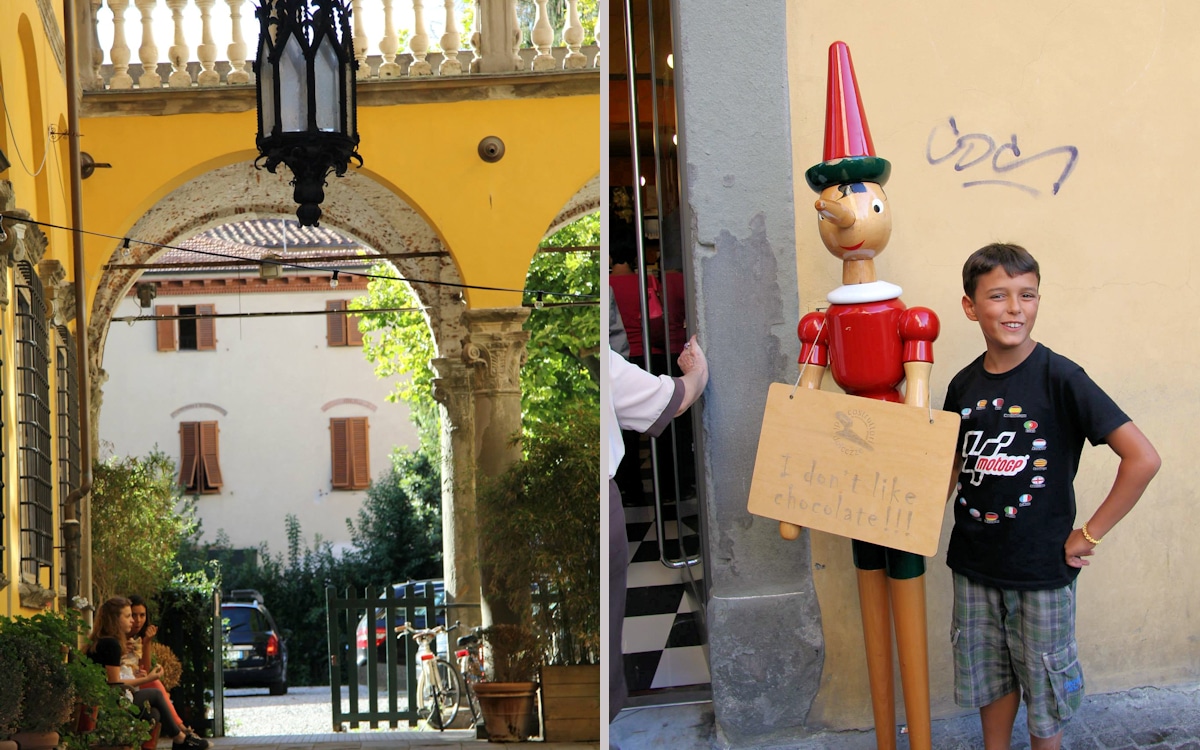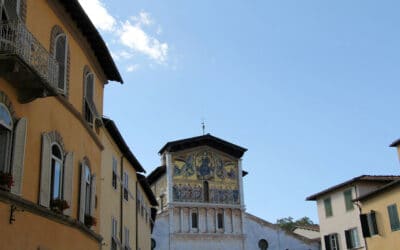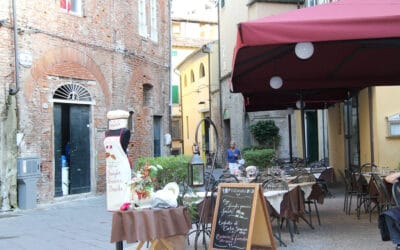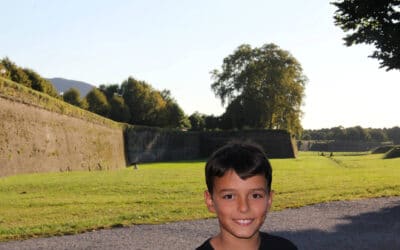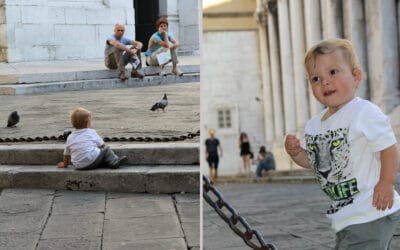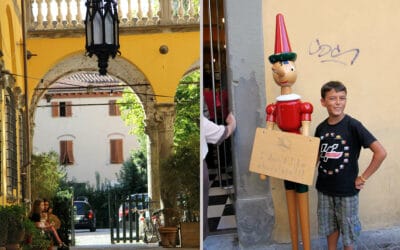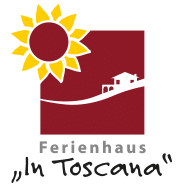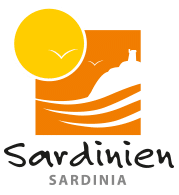
Home » Tuscany advice and service » Tuscany travel guide and city information » Photos and information Lucca and province
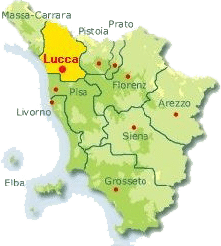
Photos and information about Lucca and province
A medieval city – a Renaissance gem A journey back in time! With the imposing cathedral “San Martino”, the beautiful city towers and great museums, Lucca is probably one of the most attractive provincial capitals in Tuscany. In addition to visiting the numerous art treasures in the fortified city, trips to the patrician villas and the Puccini House on Lake Massaciuccoli are highly recommended. You should start your “sightseeing tour” with a walk along the city walls! You read that right, dear holidaymaker! Or how about a carriage ride along the city walls - so you don't miss the fantastic view of the beautiful Tuscan landscape! You can and should conquer Lucca on foot, otherwise you would miss the incredibly cute, playful, dreamy little corners! The “Palazzo della Provincia”, the “Teatro del Giglio” and the wonderfully romantic cathedral square “Piazza San Martino” invite you to stroll and dream. Further towards the old market, a huge, round square surrounded by medieval buildings and palaces shows how incredibly harmonious the combination of old and new can be. Respect for both history and tradition make this possible. You should also take a walk to the Duomo “San Martino”, which, in addition to wonderful paintings and frescoes, also contains tombs from the early Renaissance. You will be amazed at the impressive facades of “San Michele in Foro” and then take a look at the master's piano in Puccini's birthplace - right next to the cathedral - which is one of the great attractions of this diverse city. One of our particular favorite sights is the “Torre del Guinigi”, which is also called the “Tower with Hair” because it is covered in trees!! On September 13th, the city offers a very special experience: the “Luminara di Santa Croce” – a torchlight procession with wooden statues through Lucca. At this festival you can once again be inspired by the flair of the past. A must for all foodies: Antico Caffé di Simo, Via Fillungo 58 (closed on Mondays) Giacomo Puccini enjoyed his cappuccino here!
Geologically speaking, the Apuan Alps belong to the Apennines and the name goes back to the ancient Ligurian tribe of the Apuans, who are mentioned by the Roman historian Titus Livius. The mountain range lies in the northwest of Tuscany, between the cities of Lucca and La Spezia, and differs significantly from the rest of the Apennines due to its very rugged shape.
The highest peak is Monte Pisanino (1945 m). The marble quarries that have made the Apuan Alps famous are characteristic. One of the largest marble deposits is in the mountains near Carrara, where mining takes place mainly at altitudes of 1000 to 1300 m and dates back to Roman times. Cervaiole, near Seravezza, is considered the highest quarry. Marble from this area was already used in the Renaissance, during the time of Michelangelo, at that time mainly from the quarries of the Altissimo and Fantiscritti mountains.
From afar you can see the wonderfully imposing Cathedral of San Cristofano (11th-15th century), crowned with its battlements. Built on the highest point in the city, the church impresses with its simple Romanesque facade and the striking portal (12th century), framed by 2 columns with stately lions: outside and inside, it is an attraction for people interested in art history or anyone who simply wants to Take pleasure in beautiful things!
A region that offers everything from the “delicate bohemian life” to “simple simplicity”.
The former summer home of the shepherds lies high up in the Apuan Alps and is a magical place. The path there leads through dark chestnut and acacia forests.
Today the renovated alpine huts are home to a research station for the Parco Alpi Apuane. You can stay overnight in the huts for a few euros. There are around 35 romantic huts made of quarry stone with crooked doors and windows and slate tiles on the roofs. They lie between gnarled fruit trees, sloe and elder bushes on a plateau where snow-white marble lumps occasionally protrude from the earth... but on the other side of the Carrara mountain ridge.
The “twin cities” of Massa and Carrara are a mecca for sculptors
For over 2000 years, life between the Mediterranean and the Apuan Alps in the so-called “twin cities” of Massa and Carrara has revolved around marble. The gigantic quarries can still be visited today and a visit is highly recommended. Because it is precisely on site that you become aware of the close connection between the outstanding magnificent buildings and the huge quarries.
The city of Carrara
white gold for sculptor geniuses
Probably the most famous marble city in the world! The ancient Romans had their slaves break out the stone there. More than 300 marble quarries are currently operating around the city up to an altitude of 1000 m. Today Carrara is mainly a commercial and industrial town, but it is still characterized by the delicate beauty of its cathedral with a two-tone marble facade (11th-14th centuries). To the right of the cathedral is the extraordinary fountain with Admiral Andrea Doria in the shape of the sea god Alberica, which in turn frames the lively cityscape including Piazza Alberica and the baroque palaces of Via Ghibellina.
In “Cave di Colonnata” at an altitude of 523 m, around 8,5 km from Carrara, there are the largest marble quarries since ancient times. Even Michelangelo went to these marble quarries and selected the marble pieces for his works of art!
The city of Massa
Provincial capital with a charming old town
Massa is characterized by its proximity to the Apuan Alps. The center of the city is about 6 km from the seaside resort “Marina di Massa”. The medieval town lies on a hill, the top of which is dominated by the ancient Malaspina castle “La Rocca”. From here you can let your gaze wander and enjoy a fantastic view of the “new” Massa and the sea. If you want to do something particularly good for your health, you will find the thermal health resort “San Carlo Terme” 5 km northeast of Massa. This is where the “Fonte Aurelia” springs, a spring with mineral-rich drinking water for stomach and kidney problems (season from May to September)! Salute!
Holiday homes near Massa and Carrara:
Castelnuovo, the capital of Garfagnana, is dominated by a medieval fortress, the “Rocca Ariostesca”, named after the Renaissance poet Ludovico Ariosto, who was city regent here from 1522 to 1525. The Rocca serves as a sort of entrance gate to a lively provincial town. Near Castelnuovo - on the other side of the Serchio - the impressive Fortezza delle Verrucole sits on a hill in the middle of forests. It was built by the Lombards over 1000 years ago. In August every year it serves as the backdrop for medieval festivals.
With “La Garfagnana” the “Lucchese”, ie the residents of Lucca, suggest a “touch of province” (until a few decades ago mainly farmers and shepherds lived here). But the valley of the Serchio river between the Apuan Alps in the west and the Tuscan-Emilian Apennines in the east is also called La Garfagnana.
Brancoli (12 km north of Lucca) offers a first beautiful insight into this special part of the Tuscan landscape. The Romanesque parish church “Pieve di Brancoli” (12th century) bears witness to a bygone heyday of Italian church art and is worth a hitchhike.
After a wonderful panoramic drive through the Gallicano Gorge you reach the huge stalactite heights in the middle of the wilderness of the Apuan Alps. Here there are stalagmites and stalactites of all shapes and colors in a unique fairytale world of rivers, small lakes and siphons in which the water seems to disappear. The grotto is well attended and can be explored in three different tours. The first lasts one hour and has no climbs while the longest lasts three hours and goes deep into the cave.
The 40 sq km reservoir is considered the region's bathing lake. Every 10 years, the water from the reservoir is drained for cleaning purposes, which means that the ruins of the village of Fabbrica di Careggine, which was flooded in 1953, appear ghostly again from the water and you can embark on an extraordinary village walk.
The ghost town of Luni with the ruins of the Roman amphitheater as well as the remains and forums of two temples should definitely be on your sightseeing program to get a good insight into this special area of Tuscany!
The nature park is located about 20 km northwest of Castelnuovo. There is an information center 7 km above the village of Corfino, which is nicely laid out around a spring water pond and is worth a visit beforehand. From here you can reach the nature park on foot, whose dense beech forests are home to rare animal species such as the golden eagle and even wolves. There is a bear enclosure and a botanical garden, as well as a small mountain hut on the other side of the pond with changing exhibitions in the summer months.
North of Viareggio, on a hill, is the town of Pietrasanta, which is known almost exclusively for its marble. But it's not just industrial production that is the focus here; it's the local stonemasons who attract artists from all over the world to Pietrasanta to have their sculpture designs carried out here.
Copies of famous marble sculptures and portraits can be purchased in the numerous exhibition halls and workshops. Of art-historical interest in Pietrasanta is primarily the Cathedral of San Martino with its wonderful choir stalls, the outstanding statue of John the Elder. Baptist and the pulpit – all made from the most precious marble! Stone in its most beautiful perfection.
Holiday homes in Pietrasanta and the surrounding area:
The hamlet is picturesquely situated on a rocky spur, offers a fantastic panorama and is the starting point for interesting hiking tours lasting 2-4 hours (Passo delle Radici, Valbona and the Alps). The Museo Etnografico Provinciale also offers impressive insights into old household items and equipment from the 19th century.
The small seaside resort is 5 km south of Viareggio. A romantic linden tree avenue leads from there towards Lago Massaciuccoli, the beautiful lake between Lucca and the sea, and takes us further to the traces of the great Giacomo Puccini and his Art Nouveau villa.
Here he composed his major works “La Bohème” and “Tosca” and you can still feel the unforgettable sound and magic of the wonderful music of the master, who was buried in the house chapel. The villa is now a museum and the Puccini Festival by the lake, which takes place in summer, is particularly recommended. A “midsummer night’s dream come true”, dear holidaymaker!
The plain between the Apuan Alps and the almost 40 km long sandy coast from Carrara to the mouth of the Serchio river is called La Versilia. A colorful mix of pleasure and bathing fun that you can enjoy in the individual seaside resorts, but especially in Viareggio itself (see below).
Holiday homes near the Versilia Coast:
Viareggio is the meeting point of Versilia with its chessboard-shaped streets, impressive yacht docks (the city is known for building luxury yachts), countless beaches and a variety of discos. The “Pineta di Ponente” in the city center is particularly beautiful, a promenade over 2 km long and up to 500 m wide, lined with Art Nouveau villas. The actual old town lies around the “Torre Matilde”, the city’s landmark. The fine white sandy beach of Viareggio offers the opportunity to switch off from the extremely varied evening program or to “prepare for it”. The colorful, extremely lively Carnival of Viareggio, which takes place in February, is particularly popular. The spectacular cars, which have become particularly famous due to their size, are celebrated and admired here. Also nice to look at, but in a completely different “way”, is a small but very fine antique market in Piazza Manzoni (on the last weekend of every month). But if you want to “completely escape the hustle and bustle for a moment”, the Gran Caffè Margherita (Viale Regina Margherita 30) offers a wonderful opportunity! This famous Art Nouveau house from 1928 just invites you to take a break. Let yourself be enchanted in a quiet way! ... In order to then “plunge” back into the fray, freshly recovered. Buon divertimento!
You can also admire this special type of garden architecture further south at Segromino/Monte. The picturesque Villa Mansi is located in the middle of a wonderful Tuscan landscape.
The baroque gem was built in the 18th century by the famous architect Filippo Juvarra. Although the interior is lacking, the villa is absolutely worth a visit! The beautiful architecture of the former country estate invites you to take a stroll in the so-called “Lustgarten” and “breathe in” the fine Italian way of life.
Northeast of Lucca (approx. 11 km) near Camigliano is Villa Torrigiani, one of the most beautiful and important villas of the 17th century in the Lucca region. Particularly worthy of mention here is the wonderful garden, which offers an impressive spectacle with its statues and water features.
Markets in Lucca
Monthly markets in the province of Lucca:
01.01.-31.12.
(every 3rd Sunday
i.month
etc. before)
Lucca
Mercati Antiquariato E Artigianato
Antique market (historic center
Via del Battistero, Piazza Antelminelli, Piazza San Martino, Piazza San Giusto, Piazza San Giovanni and Piazza Bernardini, from 9 a.m.)
01.03.-31.12.
(every 2rd Sunday
i.month
etc. before)
Forte Dei Marmi
Mercato Antiquario Del Forte
Market for antiques, handicrafts and collectibles (Piazza Dante 1, 9 a.m. to 19 p.m.)
Mercatini a Lucca Markets in Lucca:
daily 6.30 a.m. to 12 p.m
Piazza Caduti del Lavoro
Vegetable market
Market for regional agricultural products
Mon.-Fri. morning
Piazza del Carmine
Mercato Settimanale weekly market
each Wed.+Sat. 8:00 a.m. -13:00 p.m
Via dei Bacchettoni
Mercato Outpatient
Market for handicraft products
every Friday morning
Corso Garibaldi
Mercato Settimanale weekly market
every 3rd week of the month
Duomo di S. Martino
Piazza Antelminelli
San Giusto e San Giovanni, all day
Antiques Fair
Antique market
every 3rd week of the month
in the historic center
Mostra piazzetta dell'arte
Art in the historic center
every last week of the month
Piazza San Giusto
Mostra mercato arti e mestieri
Arts and crafts market
20.01.-16.12.
(every 3rd week of each month) from 9 a.m
historical center
Via del Battistero
Piazza Antelminelli
San Martin Square
Piazza San Giusto
Piazza San Giovanni and Piazza Bernardini
Mercati Antiquariato E Artigianato
Antique market
Markets in the province of Lucca
01.01.-31.12.
(every morning)
Bagni di Lucca
Mercati settimanali weekly markets
Tue+Fri: Piazza Aldo Moro
Wed.+Sat.: Fraz. villa
01.01.-31.12.
(every Thursday morning)
Altopasci
Mercato Settimanale weekly market
(historic center)
01.01.-31.12.
(every morning)
Barga
Mercati settimanali weekly markets
Ms.: Via Dante
Sat.: Via Giardino Mordini and Piazza Campo Palio and Piazza Libertà
01.01.-31.12.
(every morning)
Camaiore
Mercati settimanali weekly markets
Mon.: Lido di Camaiore, Lungomare Europe
Tuesday: Capezzano Pianore, Piazza degli Alpini
Fri.: Center, Viale Oberdan
01.01.-31.12.
(every Monday morning)
camporgiano
Mercato Settimanale weekly market
(historic center)
01.01.-31.12.
(every morning)
Capannori
Mercati settimanali weekly markets
Thu: Via di Piaggiori
Fri.: Piazza della Chiesa and Via Martiri Lunatesi
Sat.: Piazza della Chiesa and Via Carlo Piaggia and Piazza del Cimitero
01.01.-31.12.
(every Tuesday morning)
Careggine
Mercato Settimanale weekly market
(Via Carraia)
01.01.-31.12.
(every morning)
Castelnuovo di Garfagnana
Mercati settimanali weekly markets
Tuesday: Piazza del Mercato
Thurs: historical center
01.01.-31.12.
(every Thursday morning)
Castiglione di Garfagnana
Mercato Settimanale weekly market
(Center)
01.01.-31.12.
(every morning)
Coreglia Antelminelli
Mercati settimanali weekly markets
Tuesday: Piazza IV November
Wed.+Sat.: Piazza Mazzini
01.01.-31.12.
(every morning)
Forte dei Marmi
Mercati settimanali weekly markets
Wed.: Via V. Veneto and Piazza Marconi
Fri.: Via dei Medici and Piazza Cellini
01.01.-31.12.
(every 2nd Sat and Sun every month)
Forte dei Marmi
Mercato Antiquario del Forte
Antique market (Piazza Dante)
01.01.-31.12.
(every Wednesday morning)
gallican
Mercato Settimanale weekly market
(Piazza del Popolo)
01.01.-31.12.
(every morning)
Massarossa
Mercati settimanali weekly markets
Tuesday: Piazza Provenziali Massarosa
Wed.: Piazza del Mercato Stiavia
Fri.+Sat.: Piazza del Mercato
01.01.-31.12.
(every Tuesday morning)
Piazza al Serchio
Mercato Settimanale weekly market
(Piazza Giovanni XXIII)
every 1st Sunday a month
Pietrasanta
Mercato Antiquariato
Antique market (historic center)
every 2st Sunday a month
Pietrasanta
La Domenica dei Mestieri
Craft market (Piazza Duomo, in front of the Teatro Comunale)
every 3rd Sunday of the month
Pietrasanta
Fiera del verde
Market for local agricultural products (historic center)
Mon.-Fri. before.
Thursday before
Fri. am.
Sat. before
Pietrasanta
Mercato settimanale weekly market:
(Piazza Oberdan)
(Piazza Statuto)
(Piazza della Chiesa-Vallecchia)
(Piazza Villeparisis-Tonfano)
01.01.-31.12.
(every Saturday morning)
Pieve Foscina
Mercato Settimanale weekly market
(Piazza Roma)
01.01.-31.12.
(every Saturday morning)
Porcari
Mercato Settimanale weekly market
(Piazza del Mercato)
01.01.-31.12.
(every Saturday morning)
Oak forest
Mercatino Settimanale weekly market
01.01.-31.12.
(every morning)
Serravezza
Mercati settimanali weekly markets
Mon.: Piazza Carducci
Sat.: Piazza Matteotti
01.01.-31.12.
(every Friday morning)
Torre del Lago
Mercatino Settimanale weekly market
(also Sun in the summer months)
each Thursday
each Fr.
every Saturday before
Viareggio
Mercato settimanale
Weekly market for clothing, gifts, food
(Lungomare, Viale Marconi and Via Fratti, 8 a.m. to 13 p.m.)
(Piazza della Pace, Via Giovanni XXIII, 8 a.m. to 13 p.m.)
(Center)
every Tuesday
Viareggio
Campagna Amica
Local weekly market for organic products (Piazza Cavour and adjacent streets, 9 a.m. to 13 p.m.)
each Thursday
Viareggio
Farmer's Market
Farmer's market for local products (in front of the pharmacy, near the police, 8 a.m. - 13 p.m.)
every 1st month + Tuesday
Viareggio
Lune e Marte – Mercatino dell'artigianato
Craft market (Via Fratti and Via Battisti, 9 a.m. to 19 p.m.)
each last Sat.+Sun. a month
Viareggio
Il Tarlo al Mare – Mercatino dell'antiquariato
Antique market (Piazza D'Azeglio, 9 a.m. - 19 p.m.)
Your contact persons
Ms. Elisa Santoni
Mr. Davide Azzaroni
Tel. +49 89 123 92 998
Cell phone +49 176 49657909

